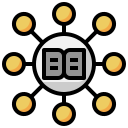
Case Studies: Digital Encyclopedias in Education — Real Classrooms, Real Impact
Today’s theme: Case Studies: Digital Encyclopedias in Education. Explore true-to-life classroom stories, practical insights, and measurable outcomes that show how verified, living knowledge transforms learning. Subscribe and share your experiences to keep this conversation growing.

Week One: Curiosity Sparks in the Science Lab
In the first week, science students compared print diagrams with interactive entries on cell structure. The animation controls became a talking point, and groups negotiated definitions together, reinforcing vocabulary through peer explanation and playful challenge.

Teacher Confidence Grows with Guided Search
A librarian modeled advanced filters, then stepped back. Teachers noticed fewer off-topic rabbit holes because students could narrow by reading level and publication date, keeping attention fixed on relevant, digestible, and current materials that matched lesson goals.
Offline Packs Keep Learning Alive
Teachers curated topic packs—renewable energy, ecosystems, and biographies—downloaded weekly to student tablets. During outages, lessons continued uninterrupted, with annotations syncing later. Families appreciated quiet evenings without bandwidth battles or phone hotspots draining data plans unexpectedly.
Community Hotspots and Library Partnerships
The district mapped community Wi‑Fi points and coordinated with the public library to refresh content every Friday. Librarians ran mini-clinics on search strategies, helping students practice queries, evaluate article overviews, and bookmark citation tools for upcoming projects and presentations.
Student Voices: Owning Knowledge
Eighth graders recorded reflections about researching local agricultural history. They praised the encyclopedia’s consistent tone, which made comparing sources easier. One student said, “I’m not guessing what matters anymore—I can follow the structure and grow confident.”

Primary Sources Without the Noise
Curated encyclopedia entries linked to digitized letters and treaties alongside contextual summaries. Students explored the same documents from multiple perspectives, understanding the author’s purpose without getting lost in unreliable websites or agenda-driven commentary or irrelevant advertisements.

Inquiry Journeys Structured with Scaffolds
Teachers used article reading levels and embedded questions to differentiate. Advanced readers followed citation trails deeper, while emerging readers used summaries and key terms. Everyone produced timelines that connected causes, turning a chapter into conversations across centuries.

Assessment That Reflects Thinking, Not Clicking
Rubrics rewarded question quality, evidence selection, and synthesis. Annotation exports revealed how students navigated sections, helping teachers see thinking patterns. The result: fewer superficial facts, more explained relationships, and a calmer classroom rhythm during research periods.


Fighting Misinformation: Media Literacy Through Verified Entries
Students hunted for contradictions between a rumor and the encyclopedia’s cited sources. A deliberately broken link sparked a conversation about verification. Together, they triangulated evidence, learning why claims need traceable origins and how context changes meaning.
Fighting Misinformation: Media Literacy Through Verified Entries
Following references became a ritual. Learners checked publication dates, author credentials, and peer review notes. The classroom posted a “source ladder” poster, reminding everyone to climb from summary to primary material whenever uncertainty or confusion or disagreement surfaced.
Teacher Professional Development: Fast Onboarding, Lasting Practice
Ninety Minutes to Classroom Use
In a single session, teachers built topic playlists aligned to upcoming units. They practiced accessibility features, created reading-level variants, and drafted exit tickets. The following week, they reported smoother transitions and fewer clarifying questions during independent research.
Peer Coaching Multiplies the Effect
A rotating buddy system paired new adopters with mentors. Five-minute hallway check‑ins proved enough to refine search prompts, share favorite articles, and troubleshoot student hurdles, keeping momentum alive without adding overwhelming workload to already busy teaching schedules.
Data Dashboards Guide Instruction
Usage heatmaps revealed which sections caused rereads or drop‑offs. Teachers regrouped students for targeted mini-lessons, celebrating persistence with badges. Over time, dashboard patterns predicted where scaffolds were needed, reducing frustration before it could derail motivation or participation.
Higher Education Use: Intro Courses Level the Playing Field
First-Gen Students Find a Friendly Starting Point
Students appreciated consistent structure, glossaries, and crosslinks. One remarked, “It feels like a map, not a maze.” Orientation leaders integrated short walkthroughs, normalizing help-seeking and reducing stigma around foundational knowledge in demanding academic environments.
STEM Labs Integrate Definitions and Diagrams Seamlessly
Before lab briefings, instructors linked encyclopedia schematics and concise term lists. Teams entered lab sessions already aligned on concepts, spending more time on experimental design and error analysis instead of arguing over confusing or inconsistent terminology or unexplained acronyms.
Academic Integrity Improves with Shared Standards
With citation tools built-in, students practiced paraphrasing and proper attribution. Plagiarism flags dropped, and office hours shifted toward idea development. The encyclopedia became a baseline, encouraging deeper dives into journals without sacrificing clarity or credible framing.
